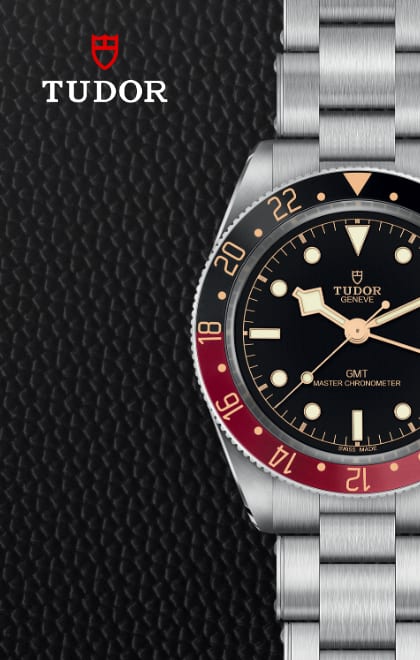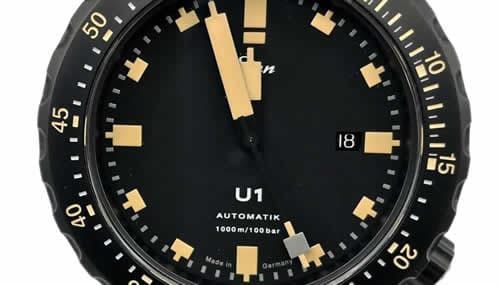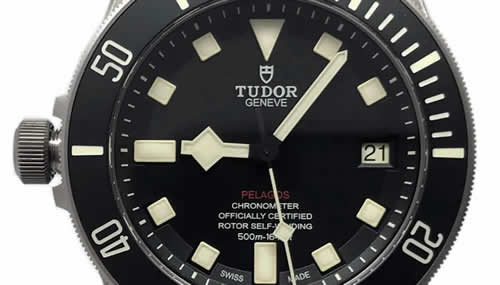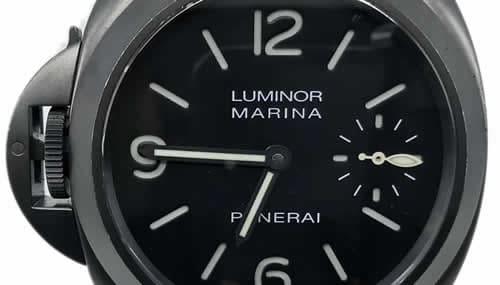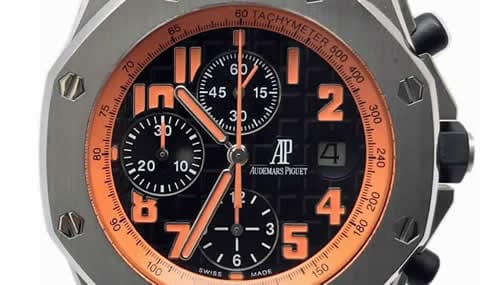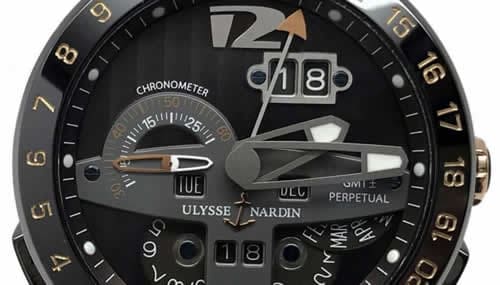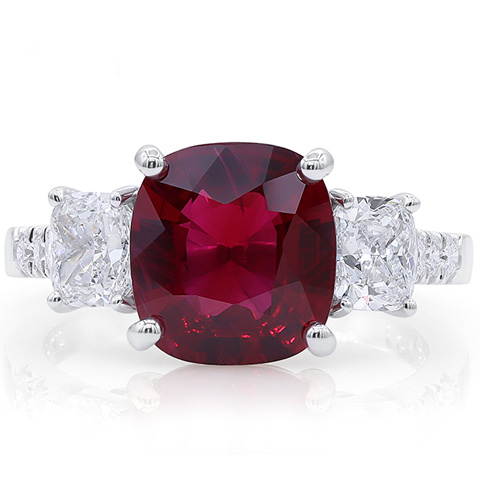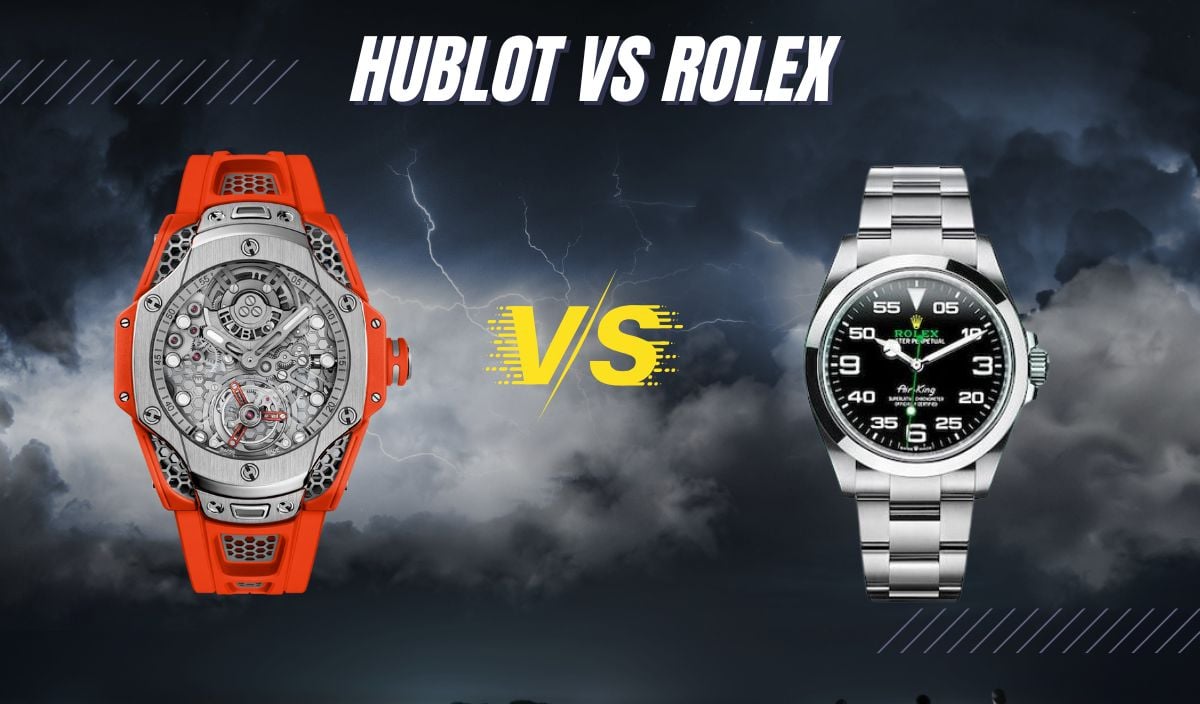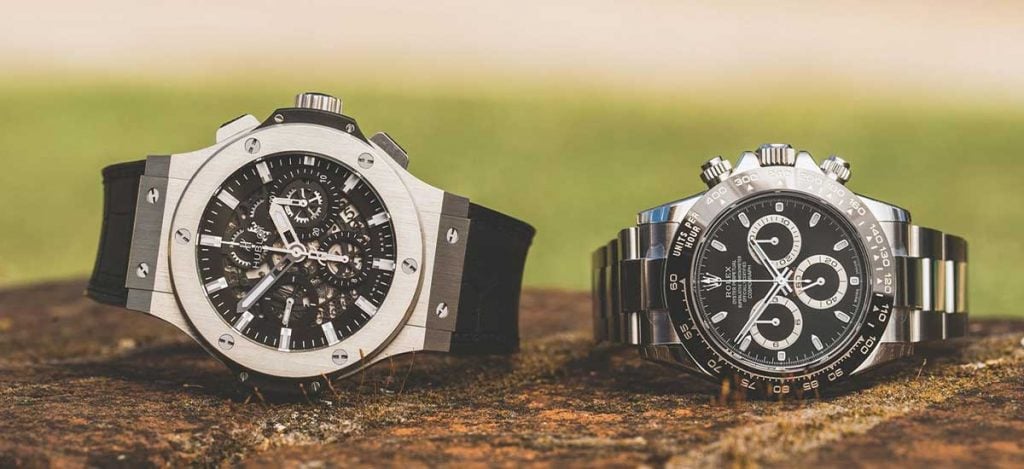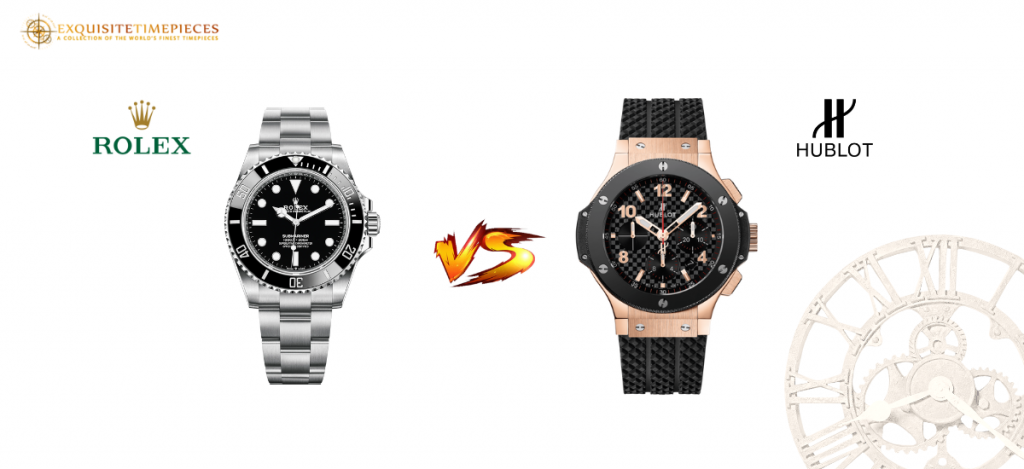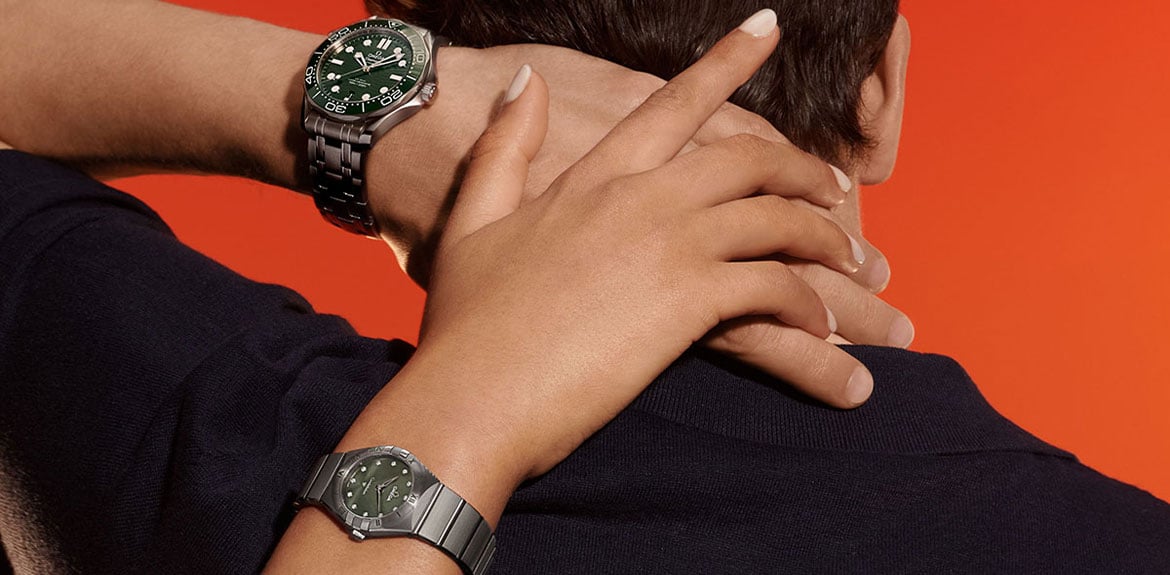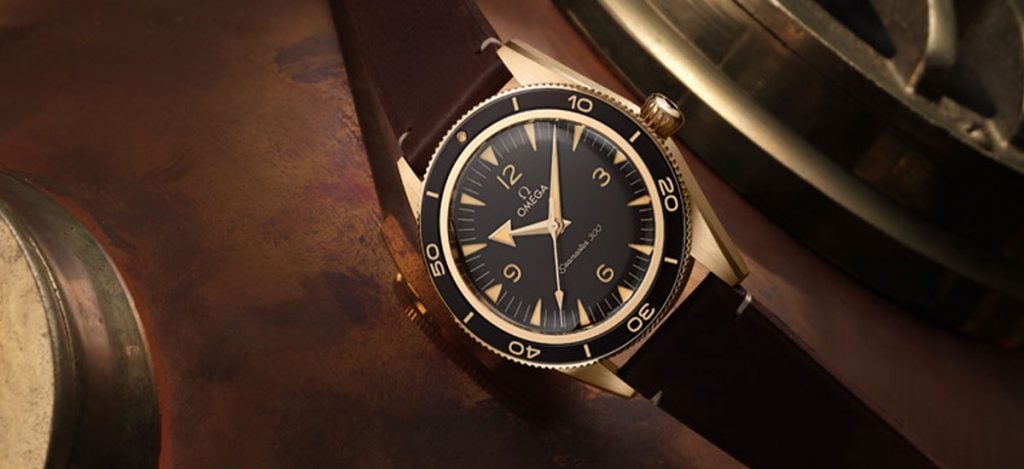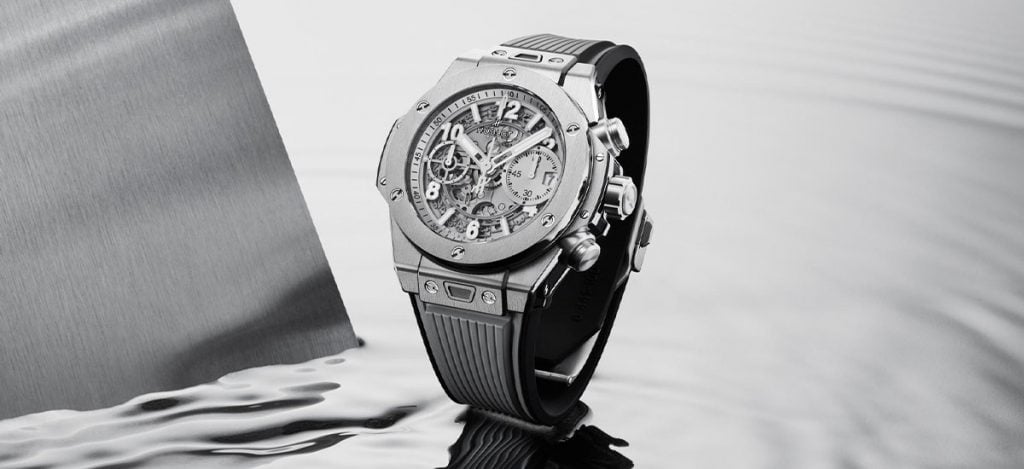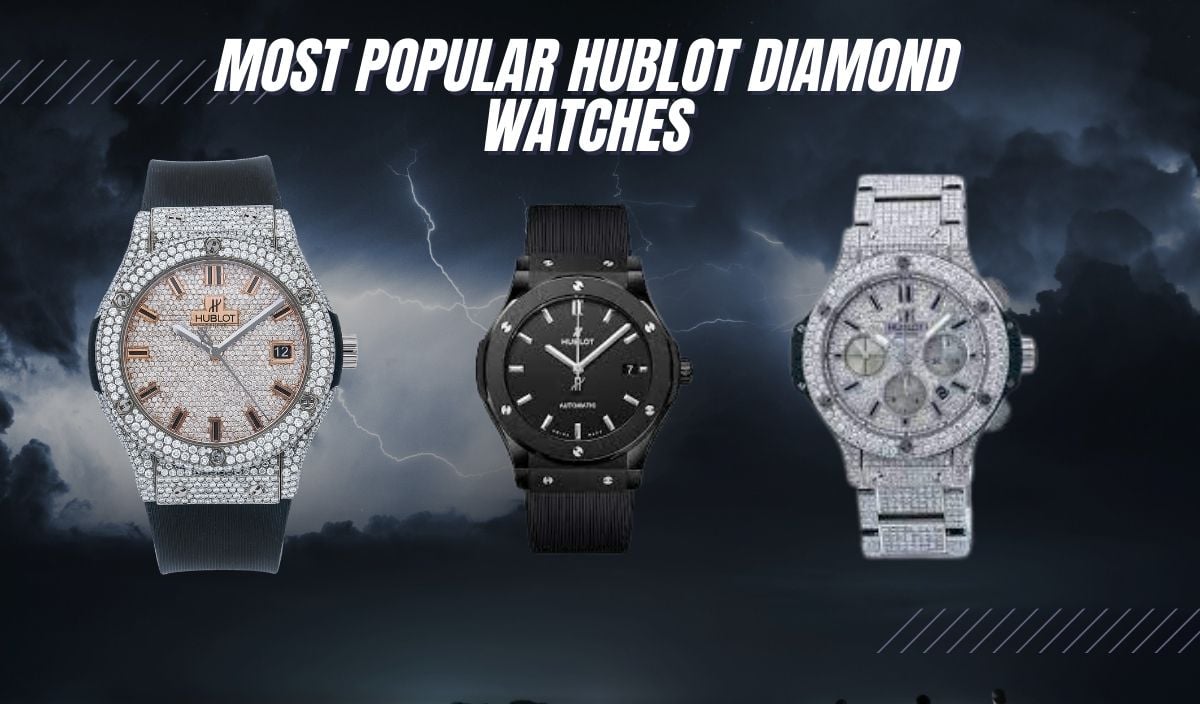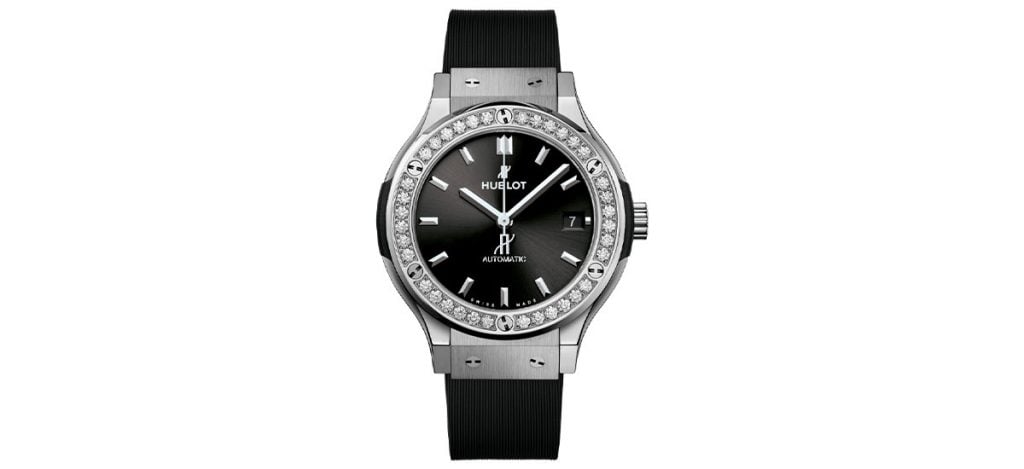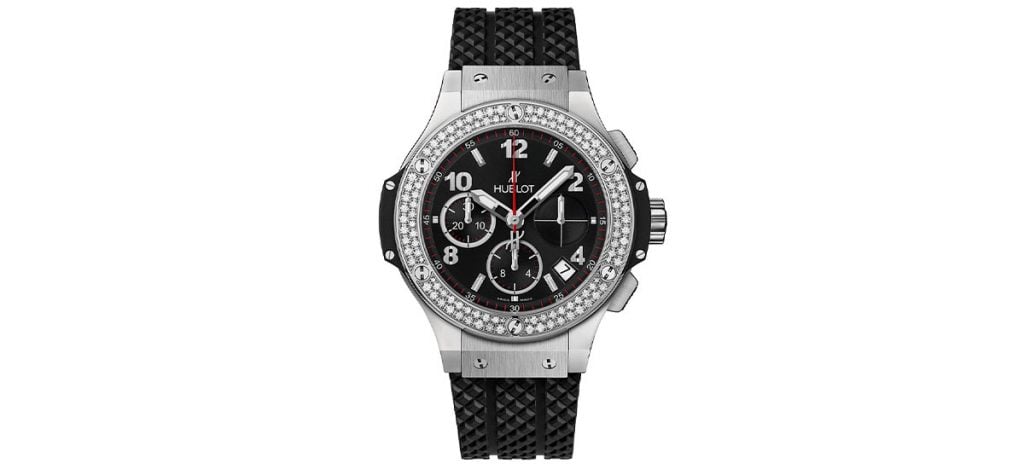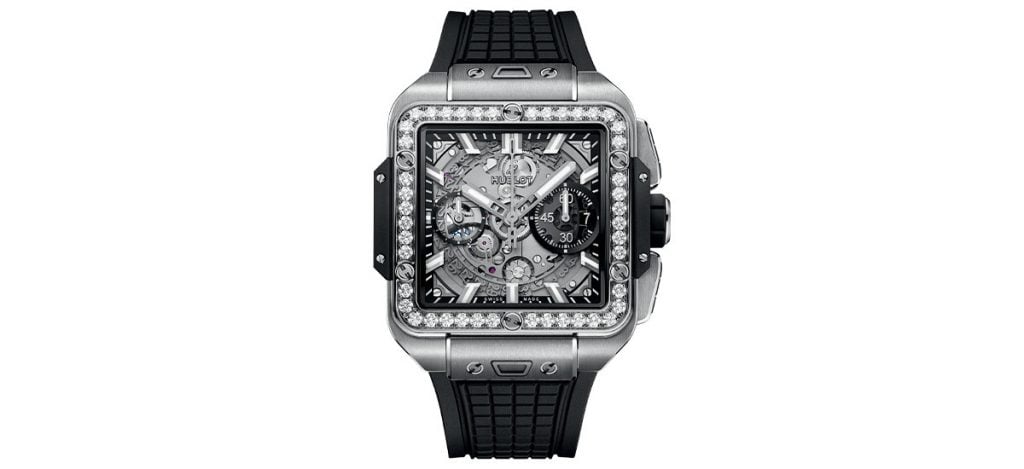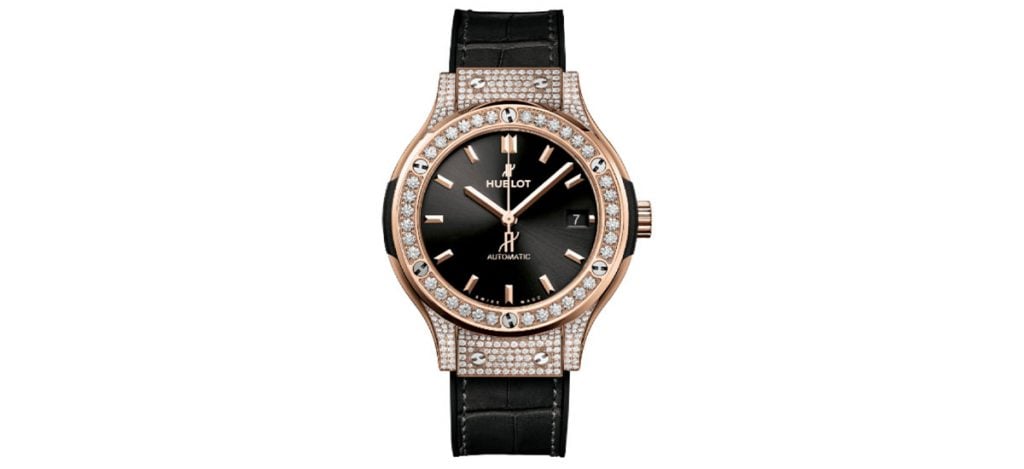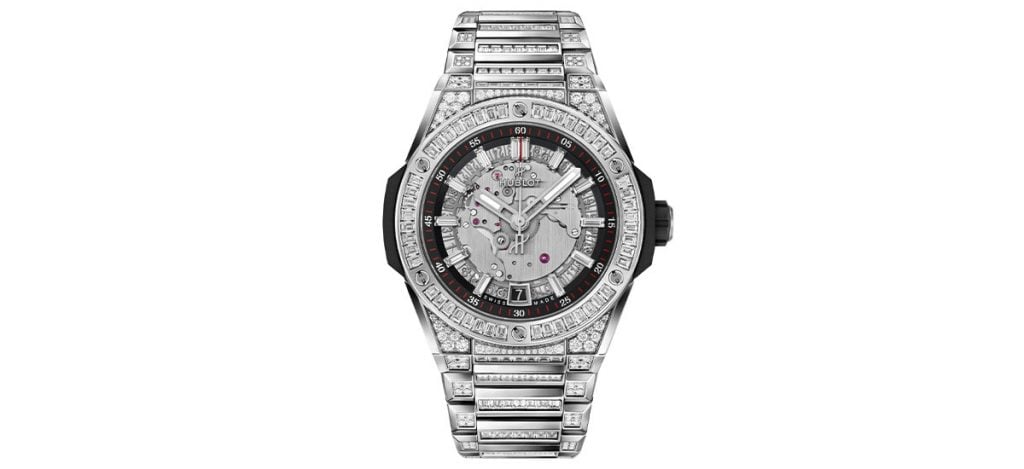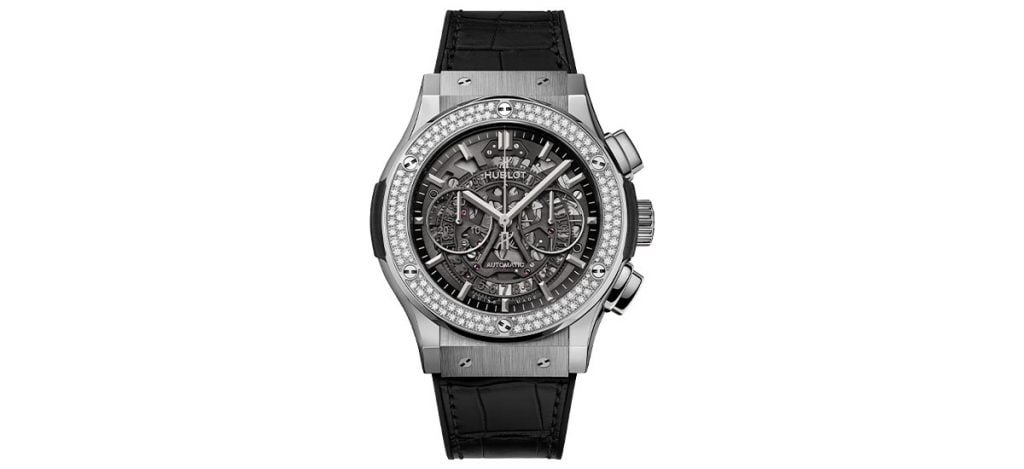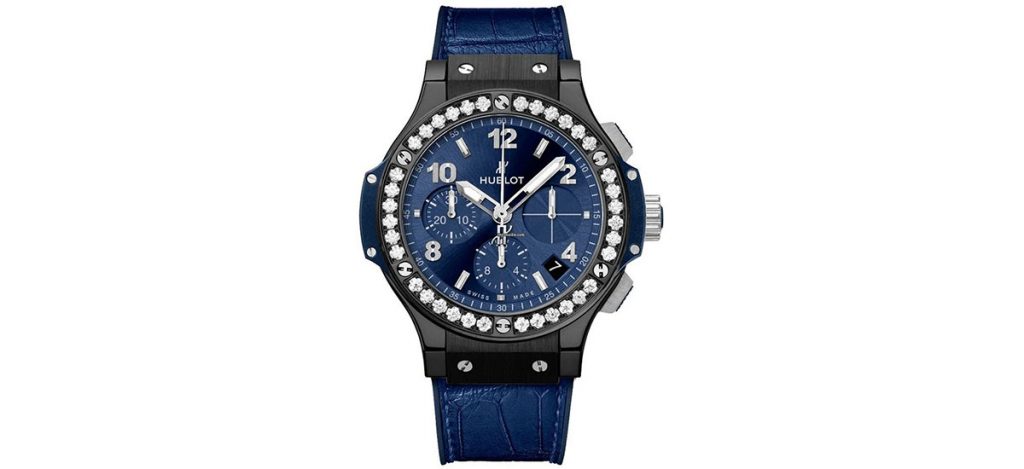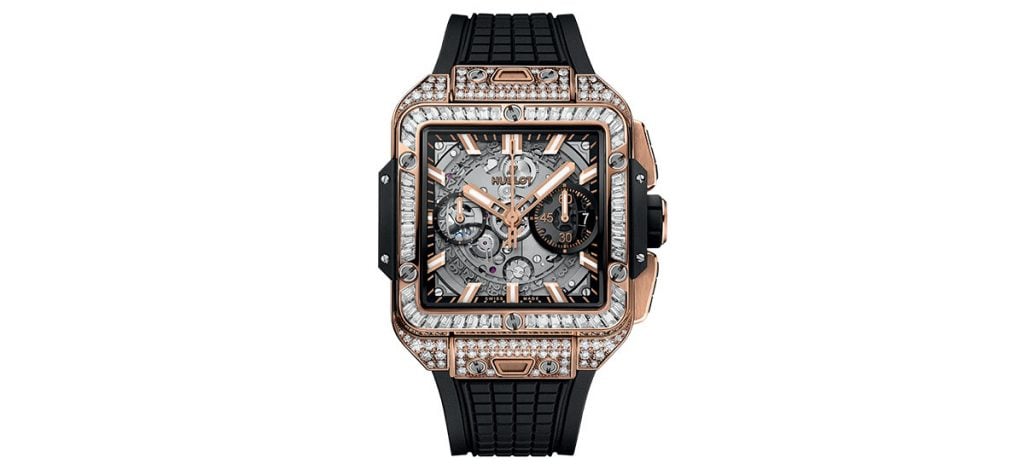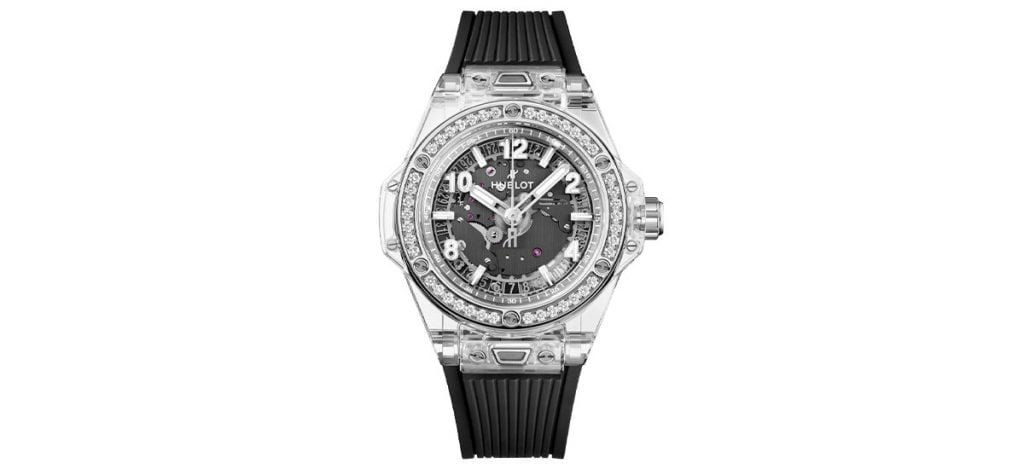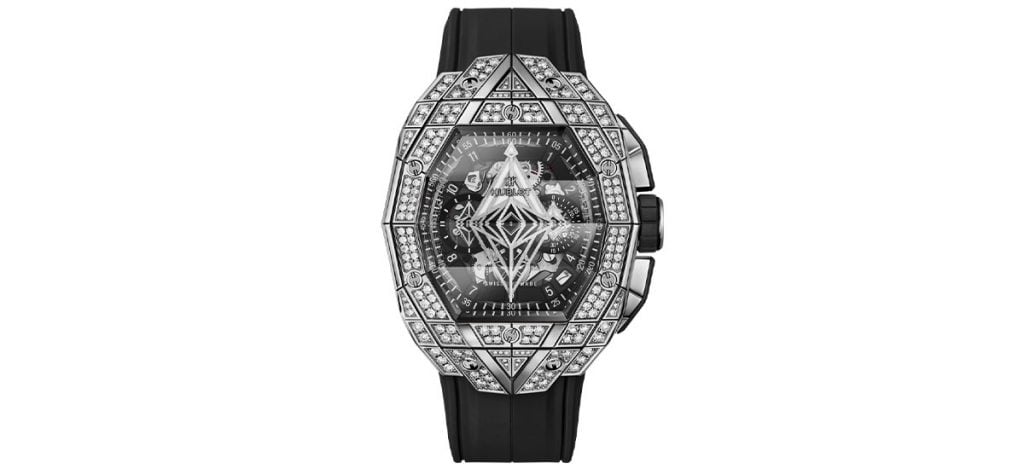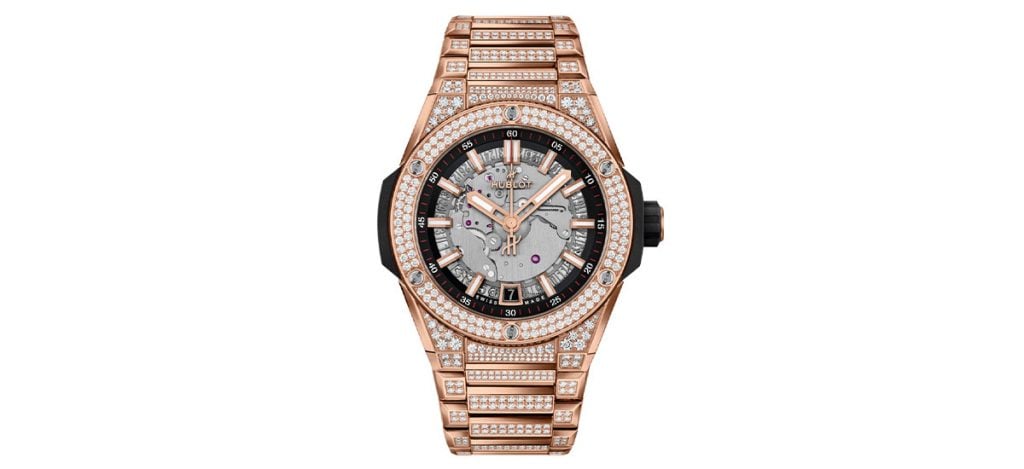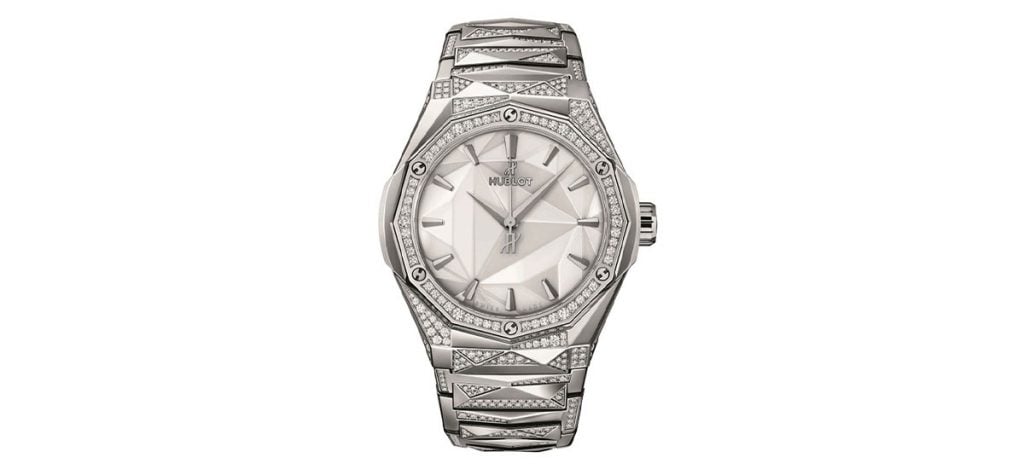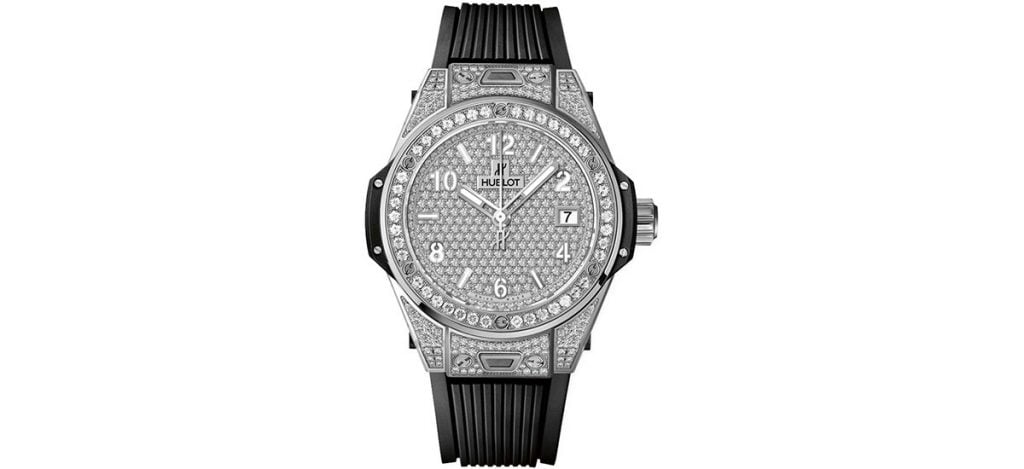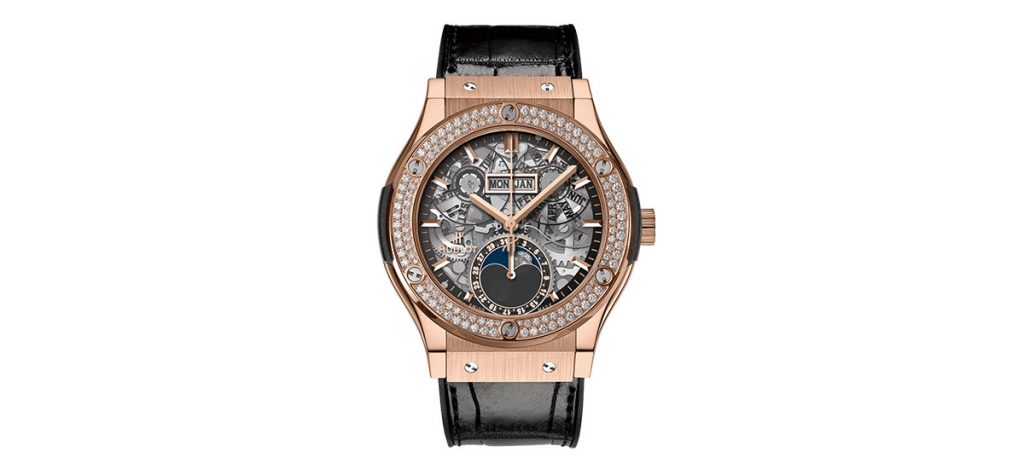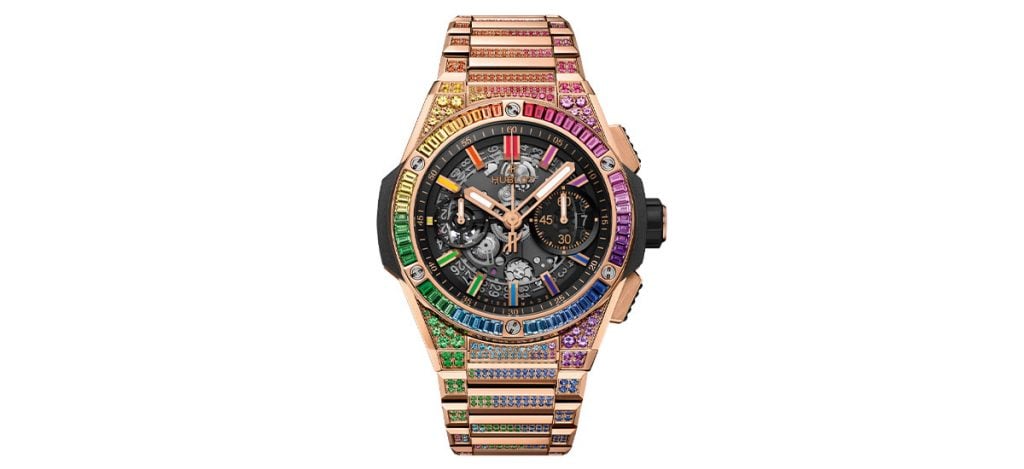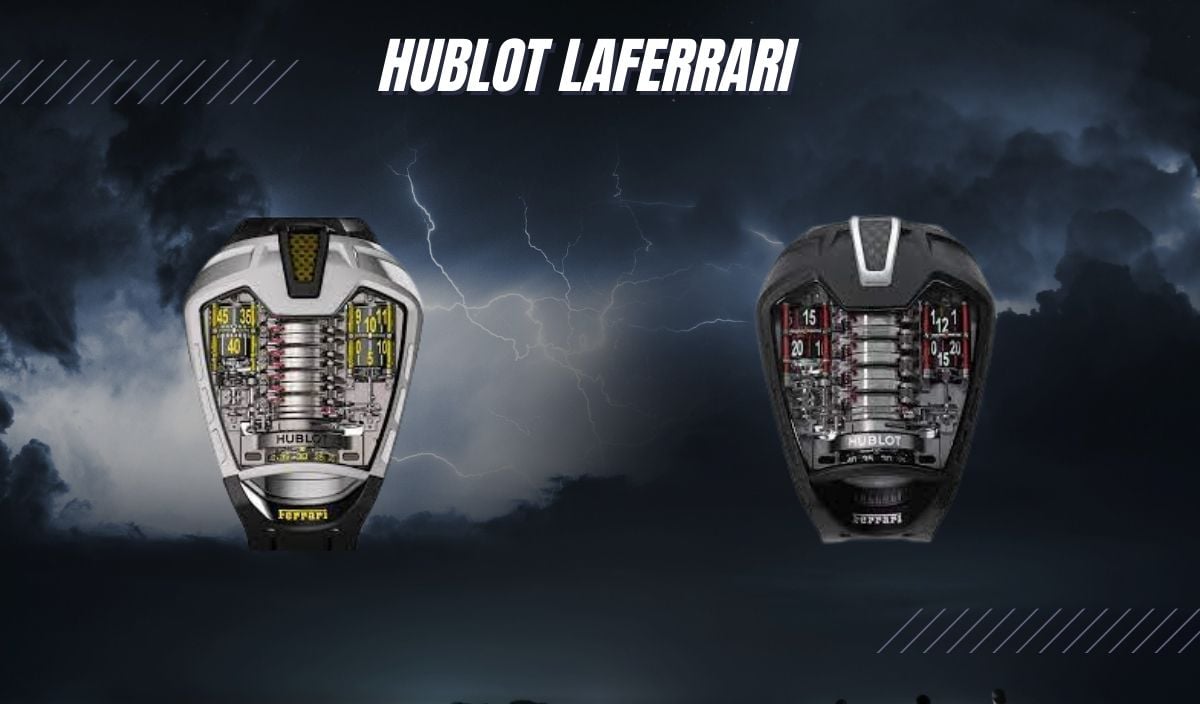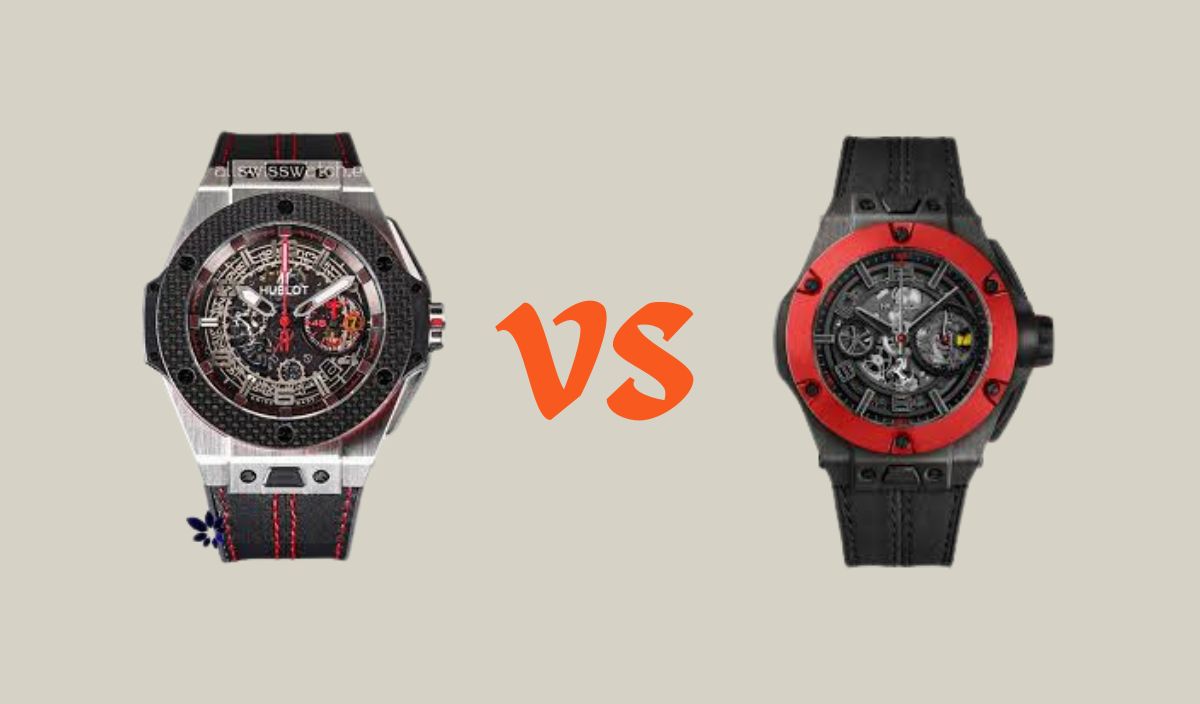
Hublot is one of the best-known watch brands, thanks to their style of always pushing the boundaries of watchmaking and creating deeply polarizing pieces that shock and amaze even those who are well-grounded in the world of watchmaking.
Hublot’s first piece was released in 1980, when they paired—brace yourself, classical watch nerds—a gold watch with a rubber strap. This is barely enough to cause modern watchmaking fans to bat an eye, but at the time, it was revolutionary.
People either hated it or adored it. Hublot continues to inspire the same reactions today, holding firm to their DNA as a brand.
For such a popular, expensive, and avant-garde brand like Hublot, it’s obvious that there are going to be fakes. And lots of them. You can find them plastered all over eBay, not to mention sites like AliExpress and Etsy.
They hook you in with shockingly low prices and present a watch that, on the surface level, looks just like a Hublot. Woe indeed to any fish who snaps at this bait. So how can you avoid the fakes and find a real Hublot that’s worth your money? Read on, and I’ll help you resolve this conundrum.
The Telltale Signs of a Hublot Replica
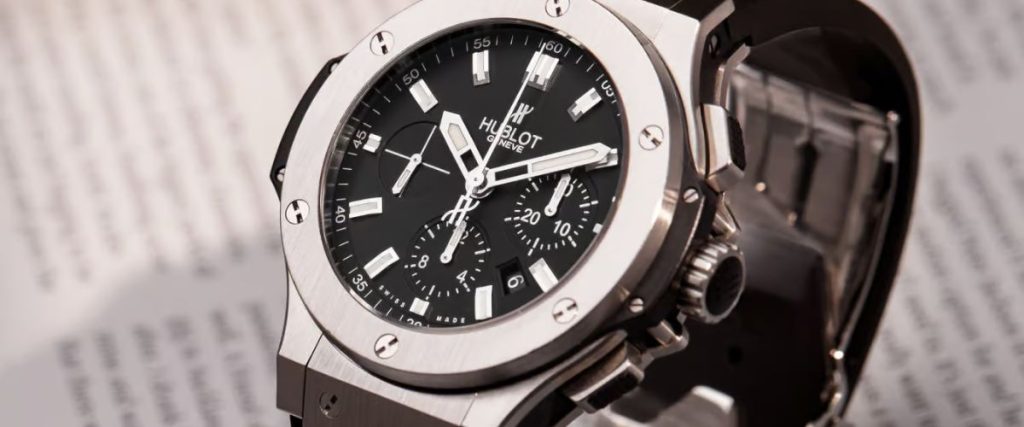
When you buy a Hublot, you’re spending all that money on quality. You could have gone and bought a cheap quartz watch at Walmart, but you went for a Hublot. The watch incarnates design and technical advancement.
When you splurge on a luxury watch, you’re buying quality, and so that’s exactly what you’ll look for when it comes to determining if a Hublot is real or not.
First of all, take a look at the price. There are very, very few sellers out there who are unaware of the real value of the watch they’re selling.
If you see a Hublot on the market for $200-300, you’ll almost certainly want to pass on it. Price reflects quality, and if a Hublot is selling for that cheap, it’s either a total fake or completely broken. The cheapest Hublot right now has a market value of over $3,000, so that sort of deal is too good to be true.
Of course, that’s for a new model—if it’s used, it can be a little cheaper, but you’ll need to use your judgment on what makes sense for a watch of its type.
A quick eBay search through current listings seems to show the very cheapest Hublots going for around $1,000 for vintage quartz models. Any less than that should be setting alarm bells off in your head. The price reflects the type of watch you’ll be getting.
If the price seems reasonable for the watch you’re getting, you’ll want to examine its quality. The price could of course be a total bluff by the seller, and you’ll want to make sure that your money is well-spent for its cost.
As a luxury brand, Hublot knows how to imbue their products with a pronounced sense of quality and class. One of the first marks of quality you can analyze at a glance are their characteristic H-shaped screws on the bezel. These should be very pronounced with deep cutaways for the parts that aren’t in the H.
They should be clean and perfectly executed, not marred or shallow. For example, both of the recessed areas of the H should be exactly equivalent in length, depth, and width. Furthermore, contrary to what you might expect, the screws should not be all aligned—that is to say, rotated to point the same direction.
Hublot does not ever arrange the screws in this way: they are all random, as an intentional design point to create an industrial appearance for the front of the watch, as if it was just screwed together. If they’re all perfectly aligned, the screws are probably fake and nonfunctional, so you’ll definitely want to keep an eye out for that.
Another key part of the quality of the watch to keep an eye on is text of all shapes and sizes. Brands often have a characteristic font that they use—in Hublot’s case, it’s a sans-serif font very similar to a font called Nexa Bold, if not identical.
Text that’s printed on the dial or elsewhere should be clean and with even spacing between letters (the technical term for this is kerning, for all you future typography nerds out there). Another key detail—Hublot often prints their logo on the inside of the crystal. When they do, there’s always a thin stroke outline around the text—often black for colored or white text, or white for black text.
If it’s missing this and is just straight white text, it’s probably a fake. Do note of course that this only applies to when the text is printed on the crystal rather than the dial, such as is often the case with their Big Bang collection.
Be sure to also look at the Hublot name engraving on the rotor and on the clasp—these engravings should be deep, clean, and pronounced, with the text in a font that very clearly matches the rest of the text on the dial and elsewhere.
Speaking of the clasp and rotor, there are a few more distinguishing features you’ll want to take a look at in these areas. Like I said, the clasp should have the engraved Hublot logo, but you’ll also want to note that this engraving should be framed by two more characteristic H screws on either side.
Swinging back (wink) to the rotor and movement, it’s not just the rotor that should bear the evidence of Hublot’s craftsmanship.
The movement should appear aesthetically pleasing and be engraved with the caliber number. You can easily look up this number to verify that the caliber number you see is actually used in that particular model of the watch.
Let’s touch briefly on the strap and crown, two more elements that are often overlooked for being small and so make for prime targets for identifying fake watches. The crown should be engraved with Hublot’s H logo or with the H shape of the screws.
Both of these should be executed perfectly and evenly. The strap is almost always integrated into the watch by two more H-shaped screws at the joint between it and the case. These should be just as clean and perfect as the others, and should be fully screwed into place to hold the strap.
The strap itself is usually rubber or an integrated bracelet, but Hublot does offer some examples with leather straps.
In these cases, take a look at the inside portion of the strap and where it connects to the clasp. This should actually be rubber, not leather, which is a bit of a calling card for Hublot as they are known for their usage of rubber in straps.
Another thing to take a look at is the watch’s serial number. Hublot watches bear a rather long serial number that should be 4 sequences of letters and numbers. You should be able to find this number on the caseback. If the number isn’t present, it’s probably a fake.
Next, look at the elements of the dial to see if they’re all executed in a pleasing manner. For example, take a look at the indices, which (if there are any) are almost always applied, meaning they’re 3D elements that Hublot machines separately and then sets into place.
Cheaper fakes will often print these on, which creates a flat and uninteresting appearance. The hands should be faceted, not totally flat, and are usually filled with lume, although this isn’t always the case.
If you’re in doubt about how your model “should” look, try looking up its reference number or scrolling through Hublot’s website until you find a similar one—you can easily compare your watch with what Hublot has online, and many of their watches even have a 3D viewer on the website so you can really get into how every detail should be.
For Hublot’s Big Bang pieces and their Classic Fusion Chronographs, there are pretty prominent pushers on the side of the case which play a role both in the aesthetic of the watch as well as a functional role. You can verify both of these things by examining the pushers and testing them out if you have the watch on hand.
Often, Hublot textures and engraves the surface of their pushers, which can create a really pleasing appearance.
If they’re totally flat and unengraved, this doesn’t necessarily mean anything (their Classic Fusion Chronographs, for example, aren’t textured), but it is something to look out for.
If you have the watch on-hand, try the pushers out to see if they actually trigger any functions. If they do nothing or do something other than start the chronograph, the watch is a fake.
Finally, if you have the watch in hand, one of the best tests of quality is the watch’s weight and feel. A well-built mechanical watch has hundreds of metal components that have gone into its construction, and you can feel a lovely sense of heft and wrist presence for most steel or precious metal timepieces.
If the watch feels cheap or light in your hand, it’s probably a fake, although it could be made from a lightweight material like titanium. You can feel the quality of a watch. It’s a product shaped from metal and produced with time and care.
If the light doesn’t glint off its surface just so, if it doesn’t feel smooth and cool in your hand, if the weight is off or it doesn’t make you aware of its presence on your wrist, then it’s probably a fake, or at least certainly not a watch worth buying.
Yes, some watches are lighter, and some more simple in finishing and design. But there is a very real and very tangible difference between a several thousand dollar luxury timepiece and a cheap fake or mass-produced watch. It’s a difference anyone can feel if you take the time to test it.
Are Hublot Replica Watches Worth it?
You should never intentionally buy a Hublot replica watch. Yes, I know—Hublot watches can be staggeringly expensive, and it feels like a good way to get that iconic look and brand name for cheap.
But ultimately, these watches are infringing on copyright and directly ripping off the design work of a large team of watchmakers at Hublot. In most cases, I don’t have too much of a problem with homage watches, which emulate the look of higher-end watches while adding their own brand name, not portraying it as the brand’s work.
A great example of a good homage watch is the Gevril Tribeca, which perfectly executed the look of vintage Rolex “Paul Newman” Daytonas. But replica watches are not just ripping off a design, but also selling it as if it was a real Hublot watch.
Putting the Hublot brand name on there is not only illegal, but morally dubious. If you’re determined to have the Hublot look for cheaper, homage watches can provide a legitimate and legal alternative without pretending to be what they’re not.
Replicas are undermining the quality and development of Hublot’s watches, which took an immense amount of thought and artisanal craftsmanship to produce. You should never knowingly buy a replica watch.
How to Avoid Getting a Hublot Replica Watch
Thankfully, there are many ways to avoid a Hublot replica. If you’re buying the watch new, stick to authorized retailers, such as Hublot itself (whether in-store or online), or other stores like the exquisite shop on whose blog you are now reading this article (we have over 260 Hublots available!).
These stores will guarantee that you receive an authentic timepiece, complete with its box and papers, without any fear or any need to use what we’ve just discussed about authenticating watches.
If, however, you’re looking at buying watches on stores like eBay, you’ll need to proceed with caution. Look for sellers who offer eBay’s Authenticity Guarantee, for example—they’ll send the watch after you order it to a third-party authenticator, who will verify that you’re receiving a real watch.
If this isn’t offered on a watch that’s caught your eye, you’ll need to proceed very cautiously. Use what we discussed above about analyzing the price and quality and, if anything feels suspicious, it’s best to play it safe and back off.
Conclusion
Looking for your own Hublot watch can feel like a daunting and overwhelming task. Thankfully, there are ways of beating the scammers and staying one step ahead of those who are trying to sell you a fake watch. Whether you choose to order through Exquisite Timepieces or Hublot themselves or decide to brave the rough seas of eBay, I hope these guidelines will steer you a safe course.


